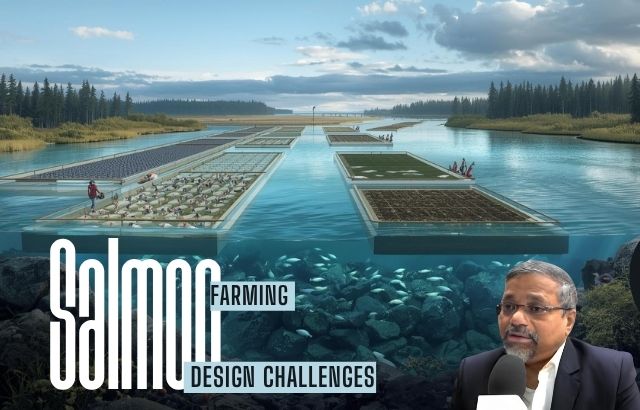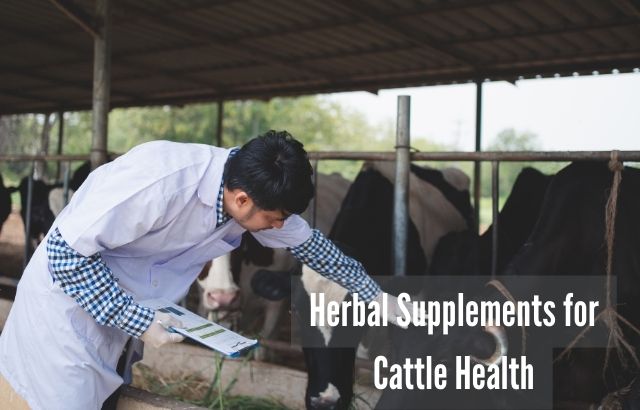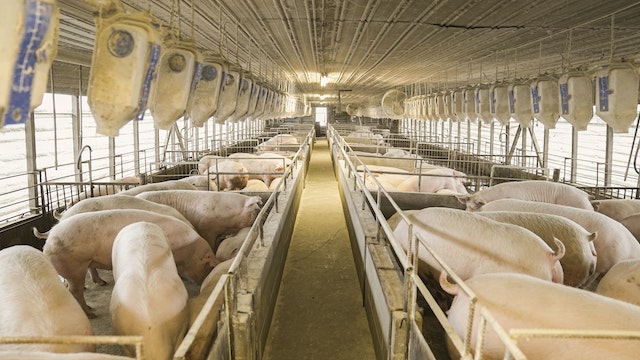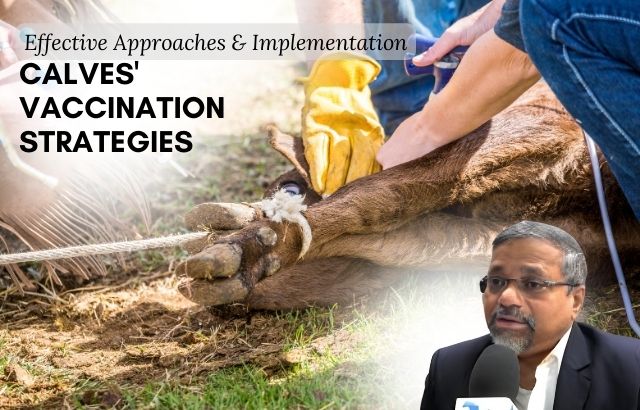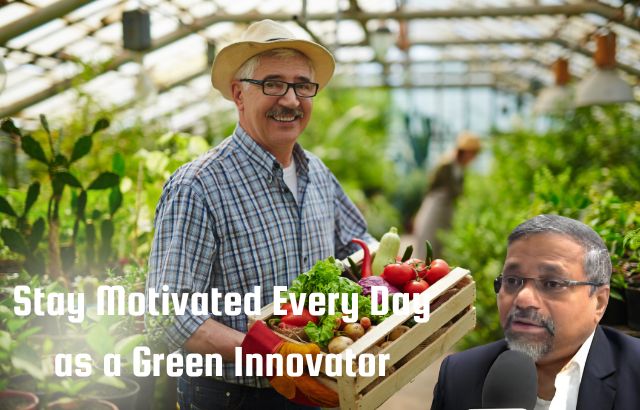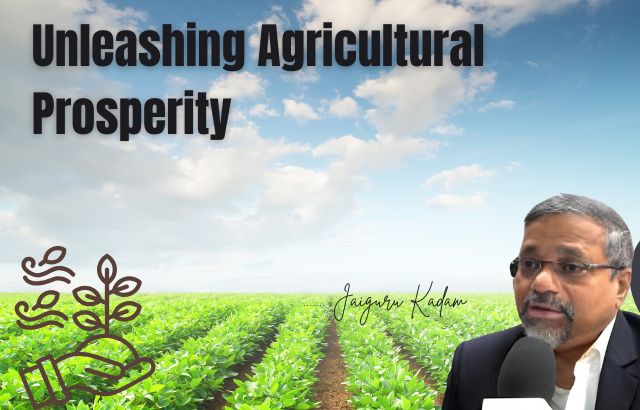By: Jaiguru Kadam, Subject Matter Specialist in Sustainable Aquaculture and Green Innovation
The ever-growing global demand for seafood has driven the need for more efficient, sustainable methods of aquaculture, particularly in large-scale salmon farming. However, as with any industry, product design in aquaculture presents its own set of challenges. From environmental impacts to operational costs, these obstacles require innovative solutions and a clear strategic vision. As a subject matter specialist with vast international experience in green innovation and sustainable aquaculture, I’ve seen firsthand how overcoming design challenges can lead to great success in salmon farming.
In this post, we will explore common obstacles in large-scale salmon farming product design, the roles of green innovators in overcoming these hurdles, and how adopting a clear, sustainable approach can lead to meaningful improvements for both the environment and the industry.
Common Obstacles in Salmon Farming Product Design
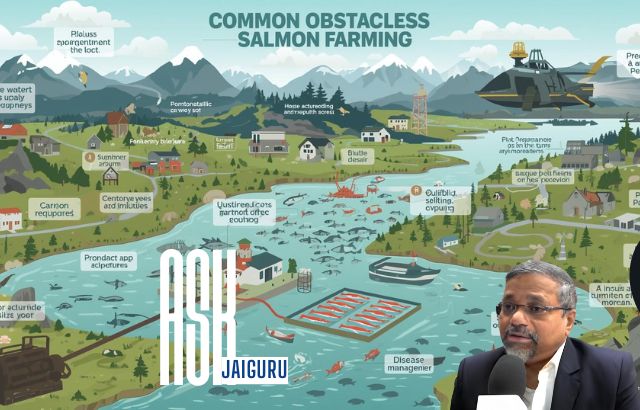
1. Environmental Impact and Sustainability
Salmon farming, when not carefully managed, can lead to significant environmental issues such as water pollution, disease spread, and the destruction of marine ecosystems. Traditional farming systems, especially those in open-water pens, can leach waste into the environment and encourage the spread of parasites like sea lice, which affects both farmed and wild fish populations.
Example:
In some regions, salmon farms have been criticized for their negative impact on local ecosystems. One notable case was the 2017 salmon farm crisis in Chile, where sea lice infestations led to mass fish deaths, sparking concerns about sustainability in the industry.
2. Operational and Production Costs
Running a large-scale salmon farm is expensive. The design of the farm must be able to handle the costs of feeding, maintaining, and harvesting millions of fish while also addressing fluctuating fish prices and market demands. Many of the obstacles stem from inefficiencies in farm design, including the design of pens, feeding systems, and water treatment technologies.
Example:
A farm in Norway invested in new automated feeding systems to reduce human error and improve feed efficiency. While this reduced costs and increased salmon growth rates, the initial investment was high, and many farms struggled with cash flow.
3. Biosecurity and Disease Management
Disease outbreaks can devastate a salmon farm, leading to both economic and environmental damage. The design of the system must ensure that biosecurity protocols are built in to prevent the spread of diseases and parasites. This requires advanced monitoring systems, waste management protocols, and barriers between the farmed fish and surrounding ecosystems.
Example:
In 2020, a major disease outbreak of Piscine orthoreovirus (PRV) led to significant losses at a farm in British Columbia, Canada. The farm had to implement stricter biosecurity measures and redesign their facilities to better contain the virus.
The Role of Green Innovators in Overcoming These Obstacles
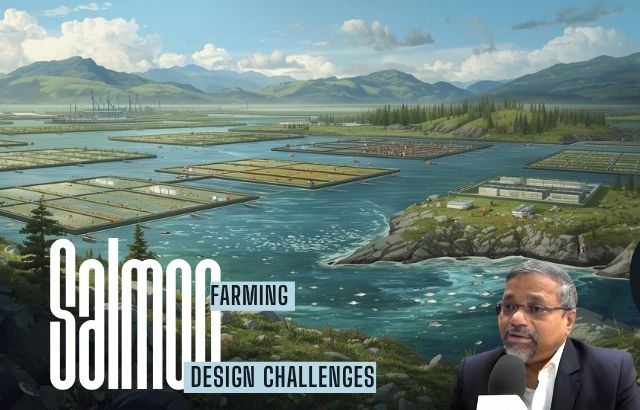
Jaiguru Kadam: A Green Innovator Leading Change in Salmon Farming
As a subject matter specialist and green innovator, I have seen how transformative innovation can be in overcoming these challenges. By applying a combination of cutting-edge technology, sustainable design principles, and holistic systems thinking, we can create solutions that are both economically viable and environmentally friendly.
Green innovators in the aquaculture sector work toward developing alternative systems that minimize environmental harm while maximizing productivity. My work has focused on finding solutions that balance the growth of the aquaculture industry with the imperative of preserving marine ecosystems.
Examples of innovations in product design:
- Closed-Containment Systems (CCS)
Closed-containment systems, such as land-based recirculating aquaculture systems (RAS), prevent waste from being discharged into the ocean, drastically reducing environmental impact. These systems also offer better control over water quality and fish health, which leads to reduced reliance on antibiotics and pesticides.Example:
A company in Iceland implemented RAS for its salmon farm. The new design increased yield by 30% and reduced water usage by 50%, showcasing the benefits of sustainable design in practice. - Offshore Salmon Farming
Moving salmon farming offshore, away from sensitive ecosystems, offers a solution to many environmental concerns. Offshore pens are better equipped to handle large-scale operations while minimizing local pollution. Innovations in cage design and monitoring technologies, such as real-time tracking of fish health, water quality, and feed consumption, have made these offshore farms more viable.Example:
A farm in Norway is using an advanced offshore system with semi-closed pens that can be moved depending on environmental conditions, significantly reducing the risk of environmental degradation. - Biodegradable Feeds
Innovative feed formulas made from sustainable and biodegradable materials have been developed to reduce the environmental footprint of traditional fish feed. These feeds can help reduce nutrient pollution in surrounding waters, making them a more sustainable option for the industry.Example:
A sustainable feed product developed in collaboration with researchers in Canada uses algae as a primary ingredient, helping to reduce the dependency on wild-caught fish and minimizing environmental impact.
Overcoming Design Challenges to Achieve Success
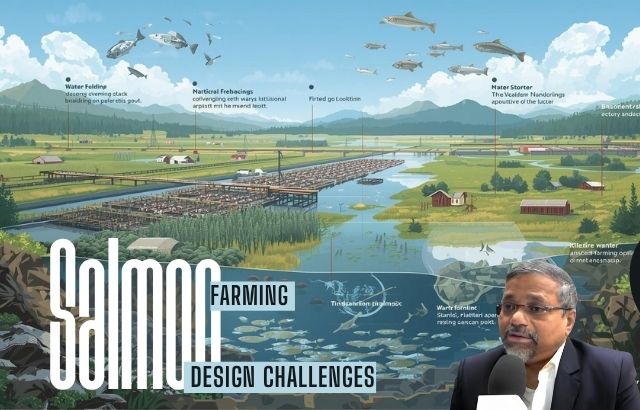
By focusing on innovative design solutions, the salmon farming industry can overcome obstacles like environmental degradation and high operational costs. Clear, strategic thinking from product designers—coupled with sustainable innovation—can pave the way for more responsible, profitable, and efficient farming systems.
Key Strategies for Success in Product Design:
- Prioritize sustainability in every aspect of the farm design: from materials and energy use to waste management and feed production.
- Invest in technology that enhances operational efficiency, such as automated feeding systems, real-time water monitoring, and predictive analytics.
- Collaborate with experts to ensure that biosecurity measures are integrated into the design, protecting both farmed and wild fish populations.
- Adopt modular and flexible designs that can adapt to changing conditions in the environment and market demands.
Ask Jaiguru
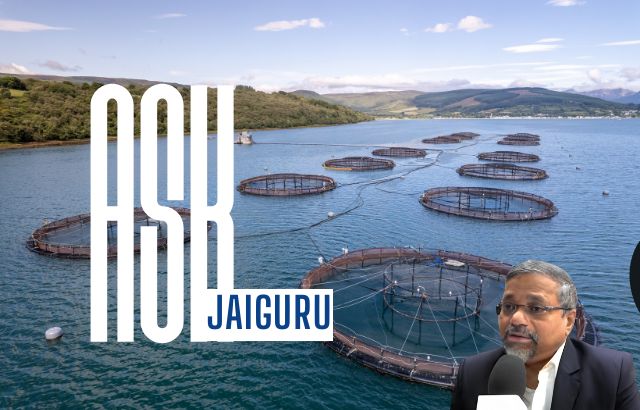
1. What are Closed-Containment Systems (CCS)?
Closed-Containment Systems (CCS) are aquaculture systems that completely enclose farmed fish in controlled environments, preventing waste discharge into the surrounding water. They offer improved water quality, reduce environmental impact, and prevent the spread of diseases and parasites.
2. How do offshore salmon farms reduce environmental impact?
Offshore salmon farms are located further away from coastal ecosystems, reducing the risk of local pollution and ecosystem disruption. Advanced technologies allow for monitoring and managing fish health and environmental conditions in real-time, ensuring sustainability.
3. What role does green innovation play in salmon farming?
Green innovation in salmon farming focuses on designing systems that prioritize sustainability, reduce environmental impact, and enhance farm productivity. Innovations like biodegradable feeds, RAS, and offshore farming are helping to reshape the industry for the future.
4. What are some financial benefits of sustainable salmon farming?
Sustainable practices often lead to reduced operational costs in the long run, such as lower feed consumption, reduced need for antibiotics, and higher yields from more efficient farming systems. These practices also help meet growing consumer demand for eco-friendly products, potentially leading to higher profits.
5. What are the biggest challenges in large-scale salmon farming?
The biggest challenges include environmental impacts like water pollution and disease spread, high operational costs, and biosecurity management. Overcoming these challenges requires a focus on sustainable design, technological innovation, and a clear commitment to improving environmental practices.
Conclusion: A Clear Mind for Achieving Success

The path to success in large-scale salmon farming lies in overcoming design obstacles with a clear, strategic vision. Through the application of green innovations, sustainable farming practices, and technological advancements, we can address environmental concerns, improve efficiency, and ensure long-term success for the aquaculture industry.
As green innovators like myself continue to push the boundaries of what’s possible, we must remember that clear thinking, collaboration, and sustainable practices are the keys to achieving lasting change in salmon farming. With the right mindset and design, the future of aquaculture can be both prosperous and sustainable.
Jaiguru Kadam
Subject Matter Specialist in Sustainable Aquaculture and Green Innovation

